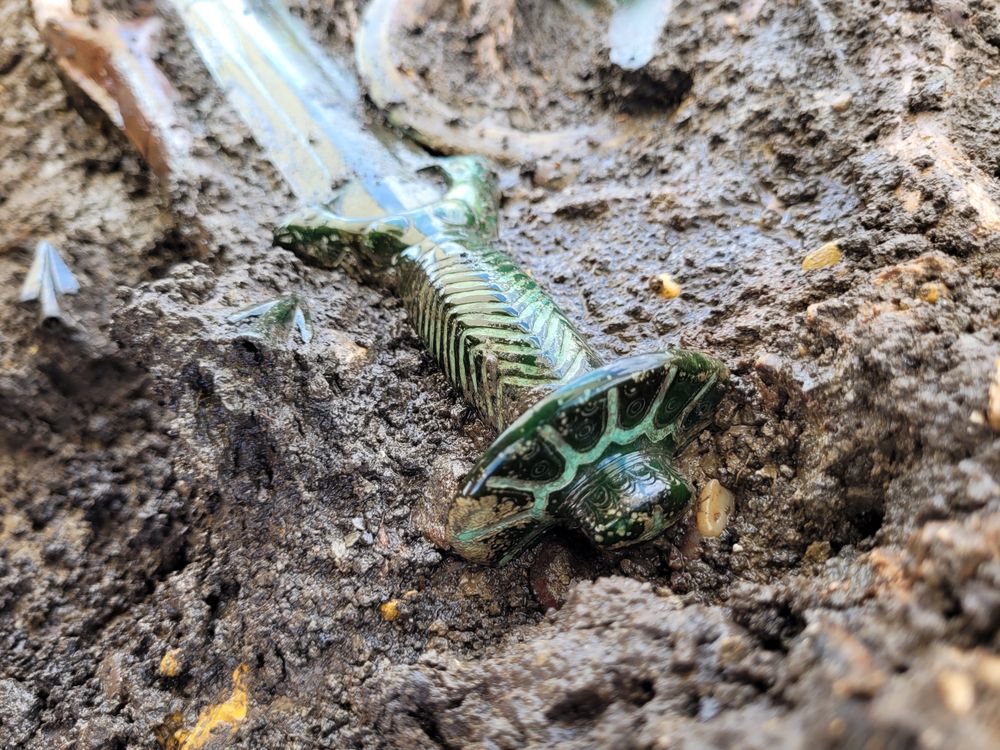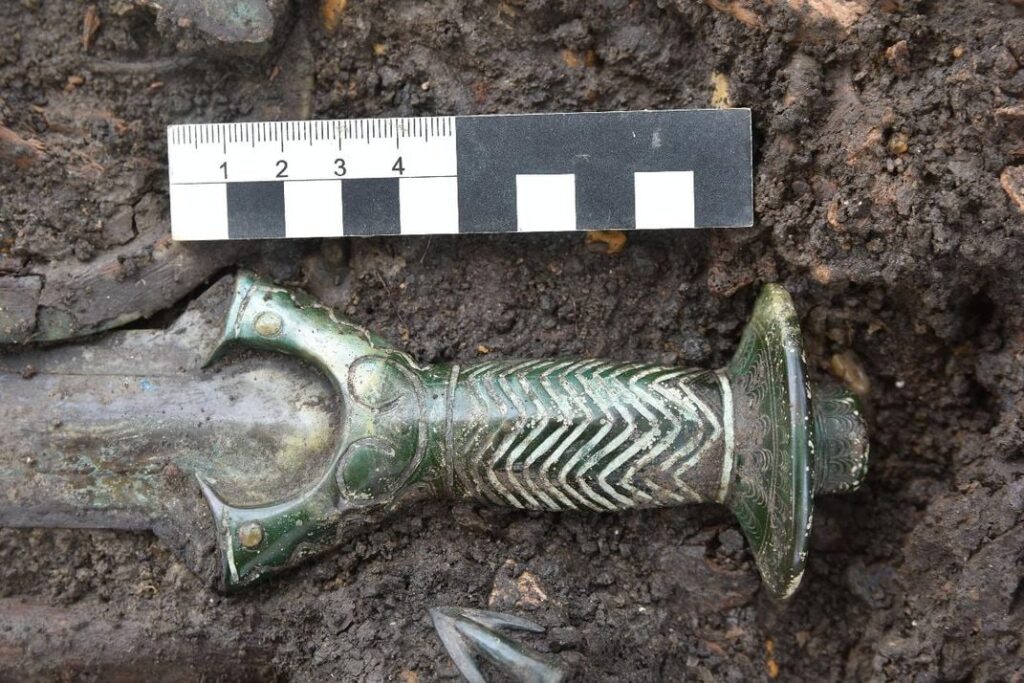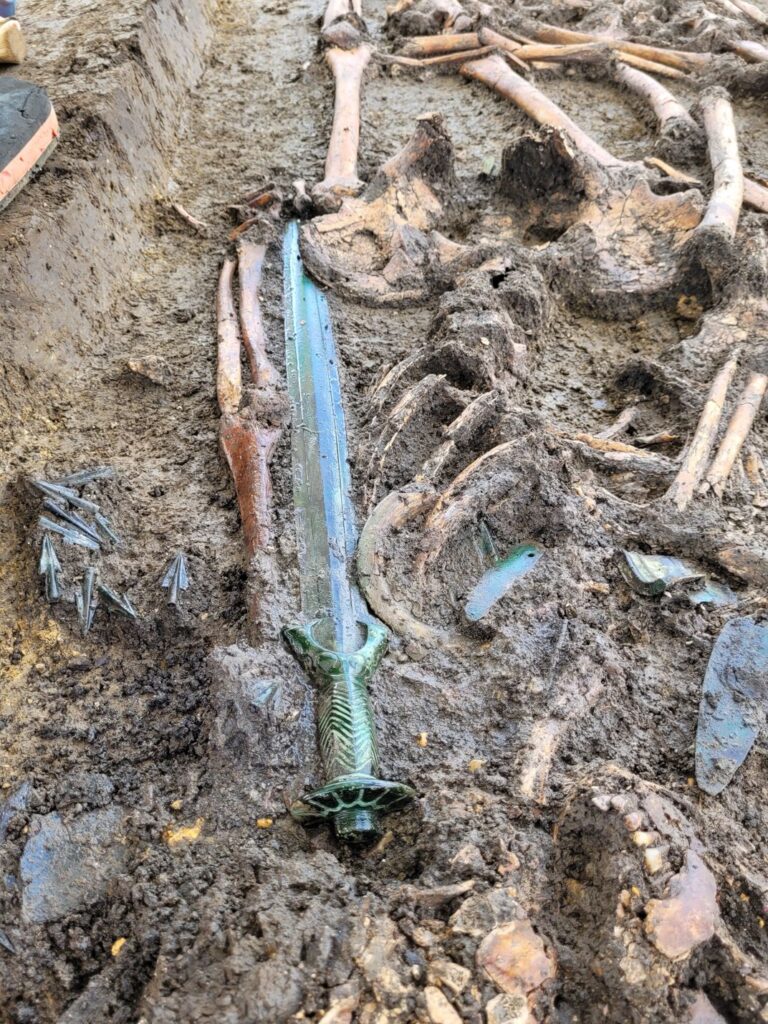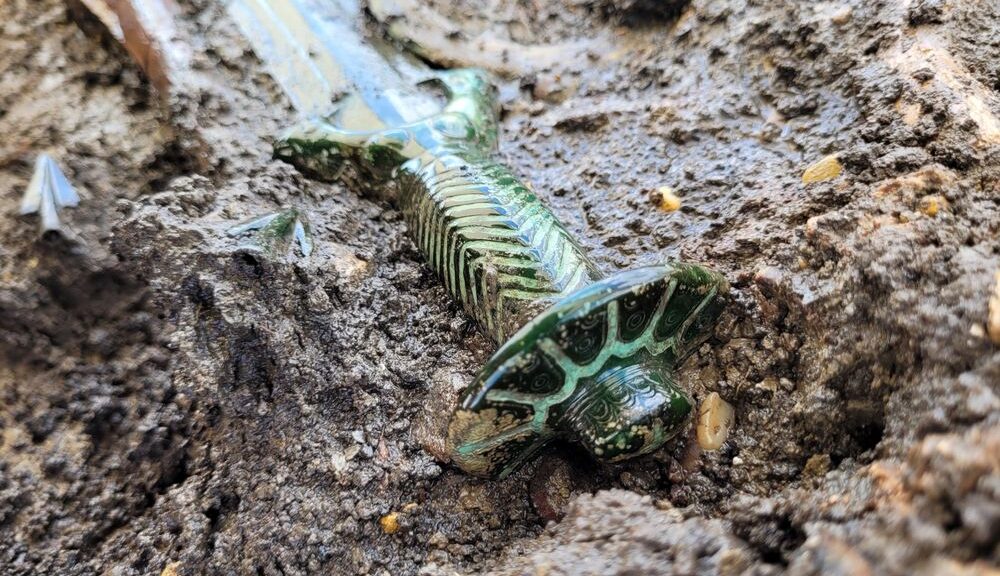Archaeologists Find 3,000-Year-Old Sword So Well Preserved It ‘Almost Still Shines’

A rare sight greeted archaeologists excavating a gravesite in the southern Bavarian town of Nördlingen last week: Nestled near the grave’s occupants was a 3,000-year-old sword.
The weapon barely shows its age. It has remained so well-preserved that it “almost still shines,” says Bavaria’s State Office for Monument Protection in a statement, per Google Translate.
The weapon sports an octagonal bronze hilt that was cast over the blade, which few smiths were skilled enough to make at the time, according to Live Science’s Laura Geggel. Only two manufacturing regions were known to have made swords of this kind: one near the excavation site in southern Germany, and the other in northern Germany and Denmark.

The sword shows no wear and tear indicating use in battle, but archaeologists say “its center of gravity made it suitable for use as a real weapon, and it was capable of being used to slash opponents,” reports Newsweek’s Jess Thomson.
Bronze swords first emerged around 1600 B.C.E. and were used until roughly 600 C.E., as Smithsonian magazine’s Alex Fox wrote in 2020. Researchers say that the Bavarian artifact dates to the end of the 14th century B.C.E.
The archaeologists say that swords like this one are quite rare, particularly because “many middle Bronze Age graves were looted over the millennia,” per Live Science.
Archaeologists have previously unearthed Bronze Age swords in burial plots in Europe, including an ornate bronze sword with an ivory and gold hilt found during excavations in Greece in 2015.

Given the soft nature of bronze, historians have previously wondered whether such blades served a ceremonial purpose, rather than a practical purpose on the battlefield.
A few years ago, scientists even staged sword fights in order to learn more about how the Bronze Age weapons could have been used effectively in battle, despite being much easier to damage and harder to repair than their iron successors.
The newly unearthed weapon was found alongside an assortment of Bronze Age artifacts, as well as three individuals—a man, a woman, and a child—all of whom were buried around the same time. Researchers don’t know how the three were connected, or whether they were related.
“The sword and the burial have yet to be examined so that our archaeologists can classify this find more precisely,” says Mathias Pfeil, head of the monument protection office, in the agency’s statement.
Researchers can say, however, that the sword’s condition is “extraordinary,” adds Pfeil. “A find like this is very rare.”
